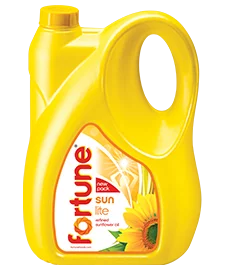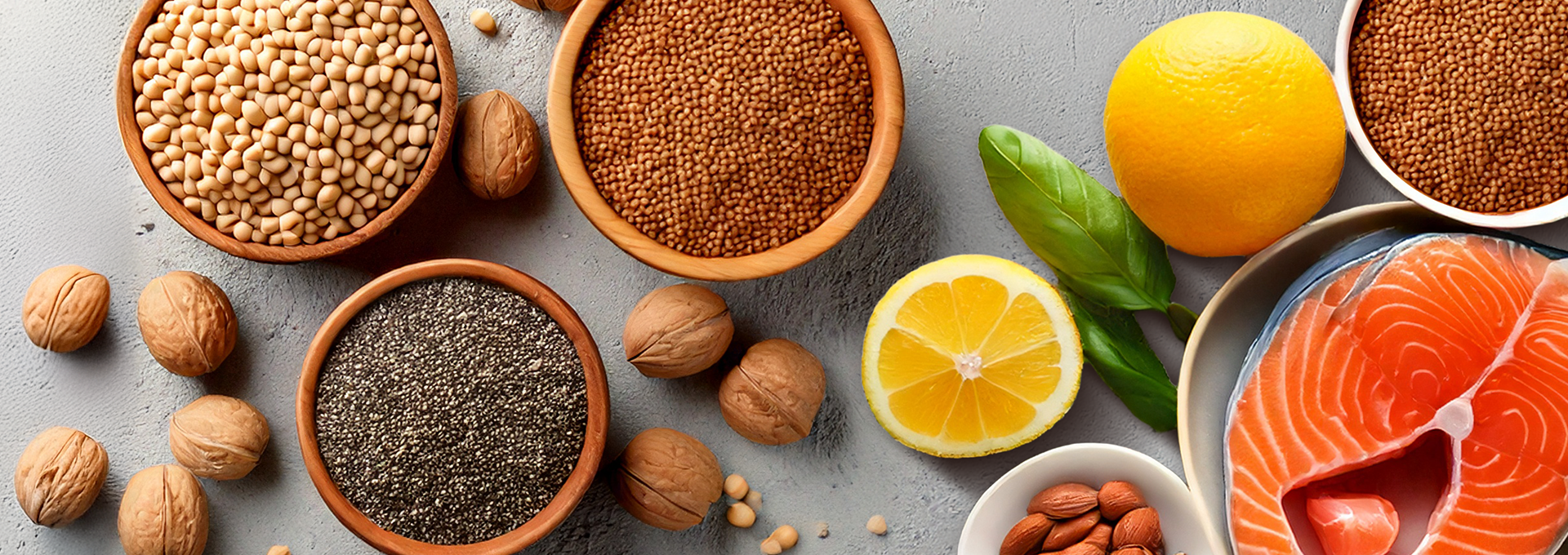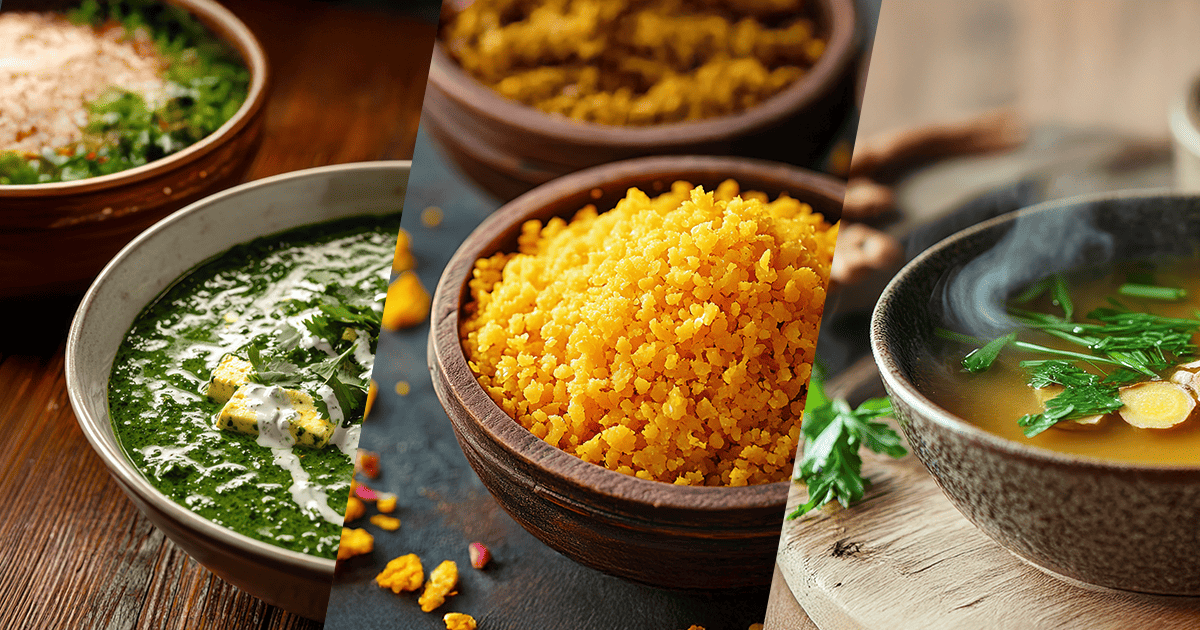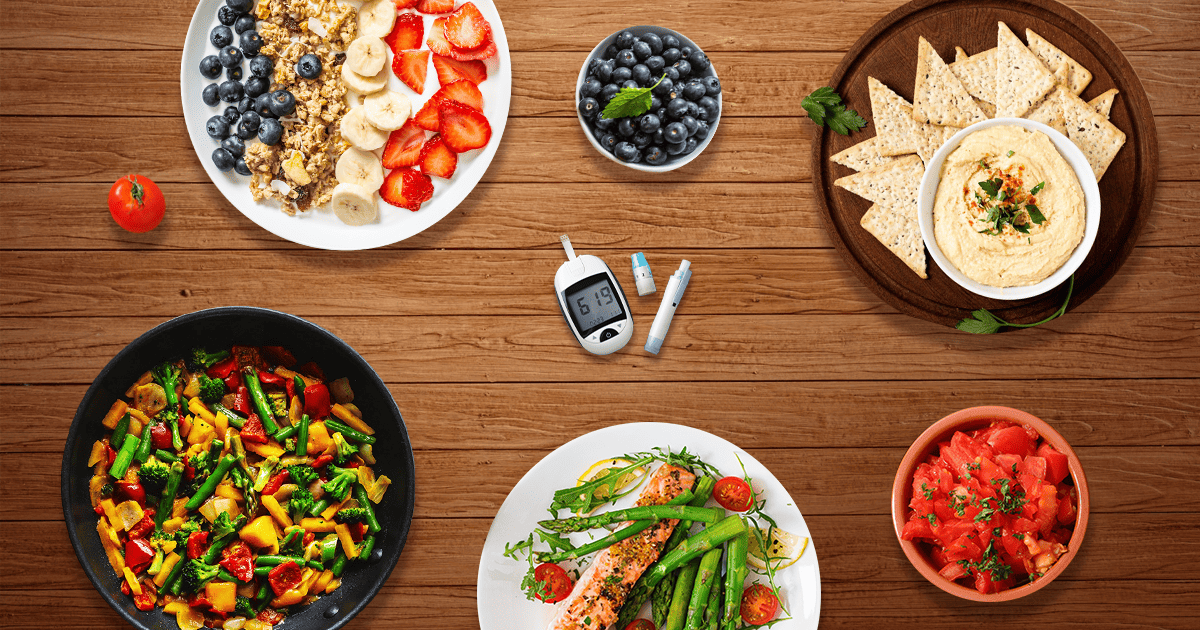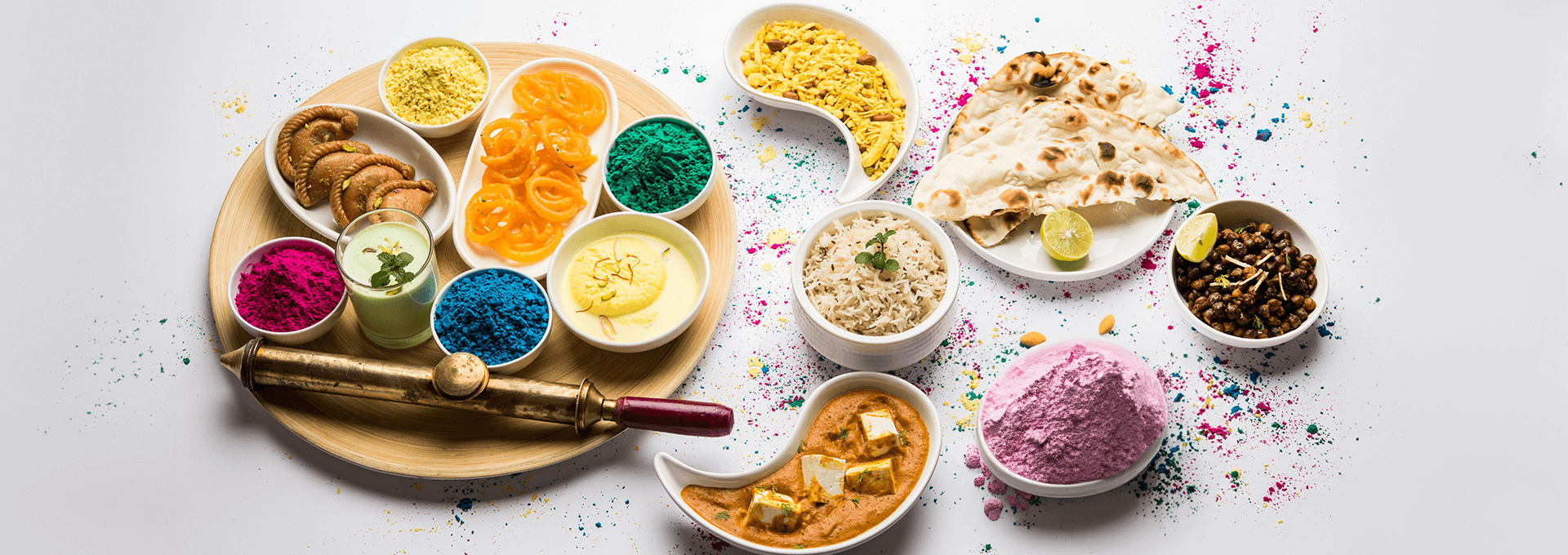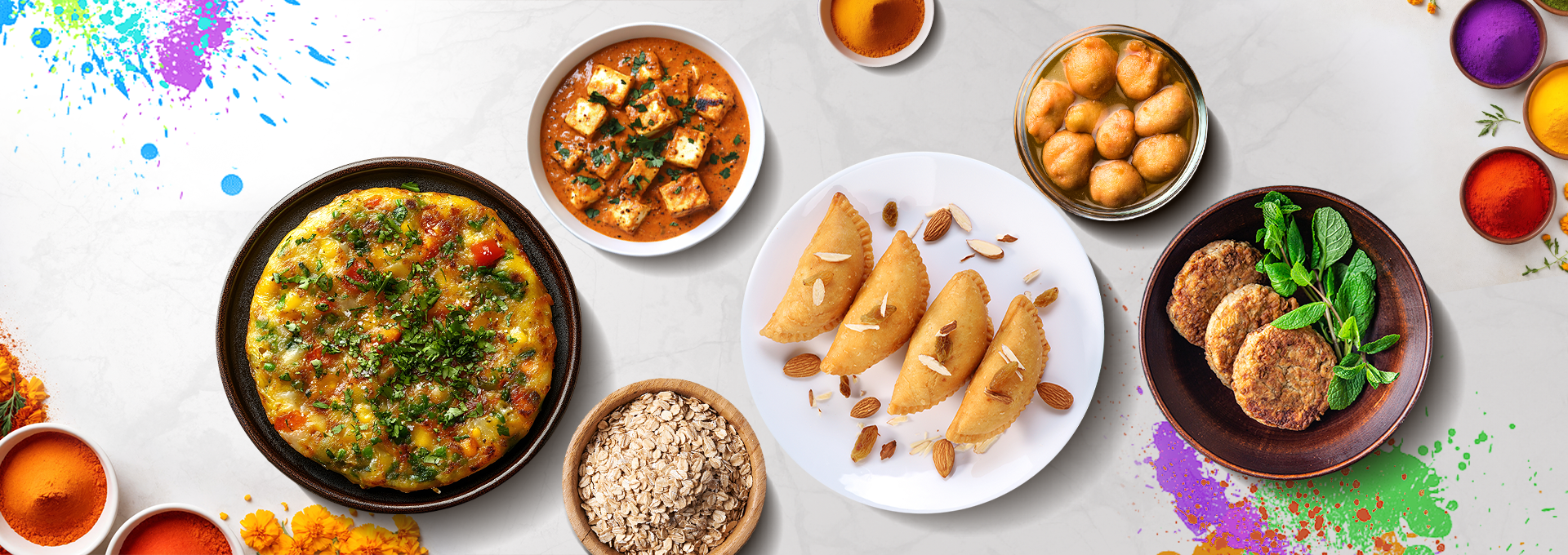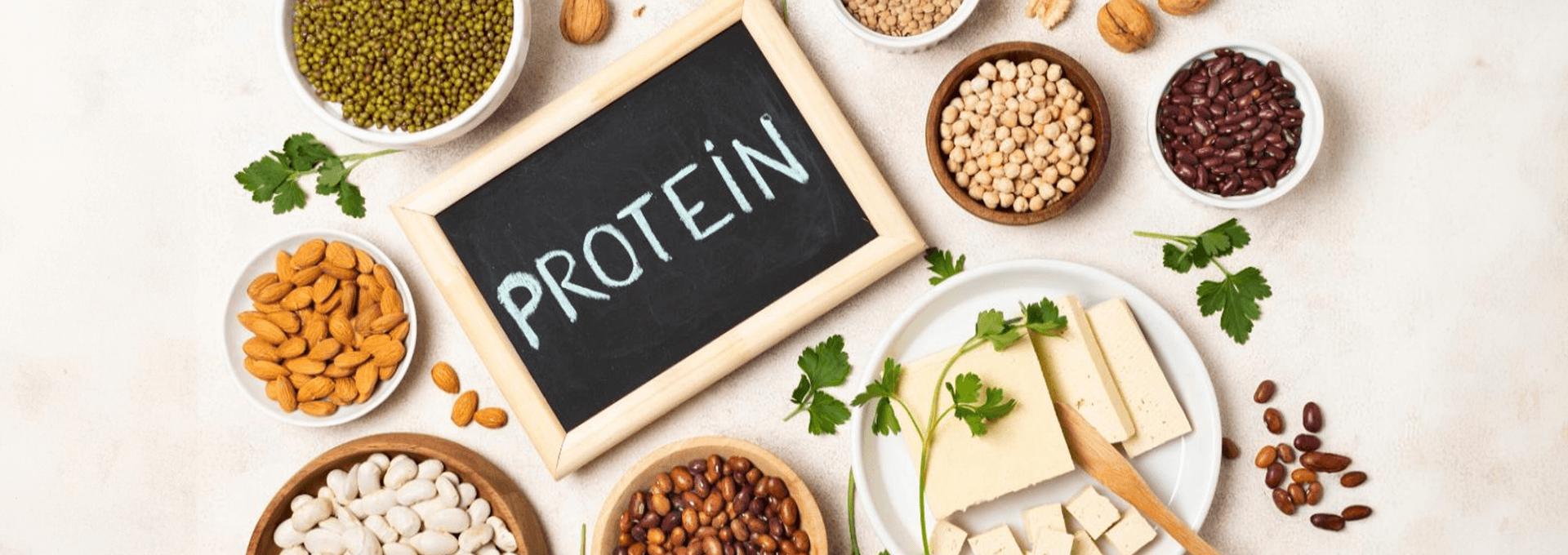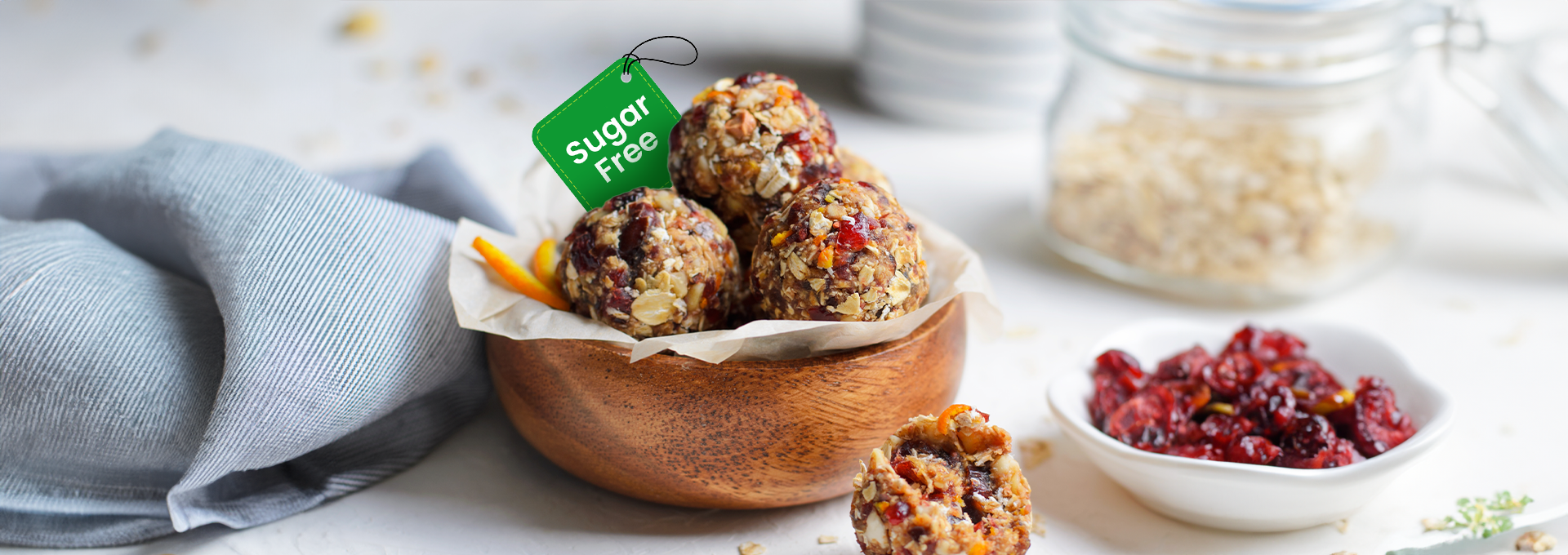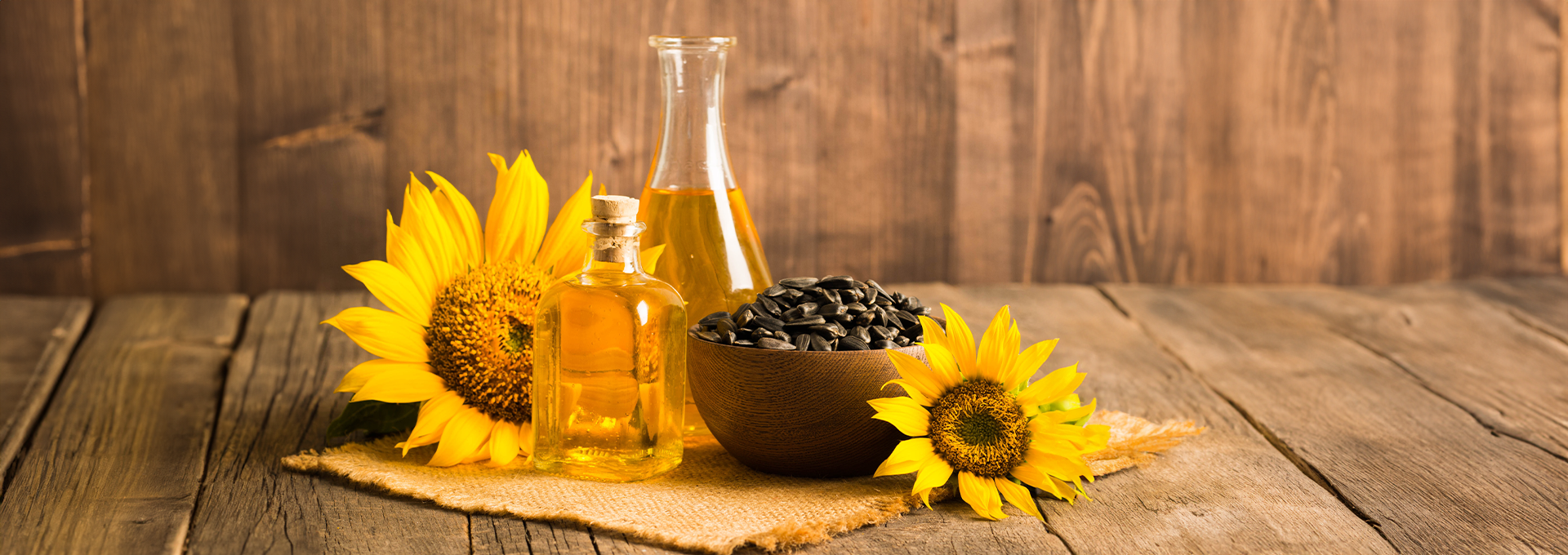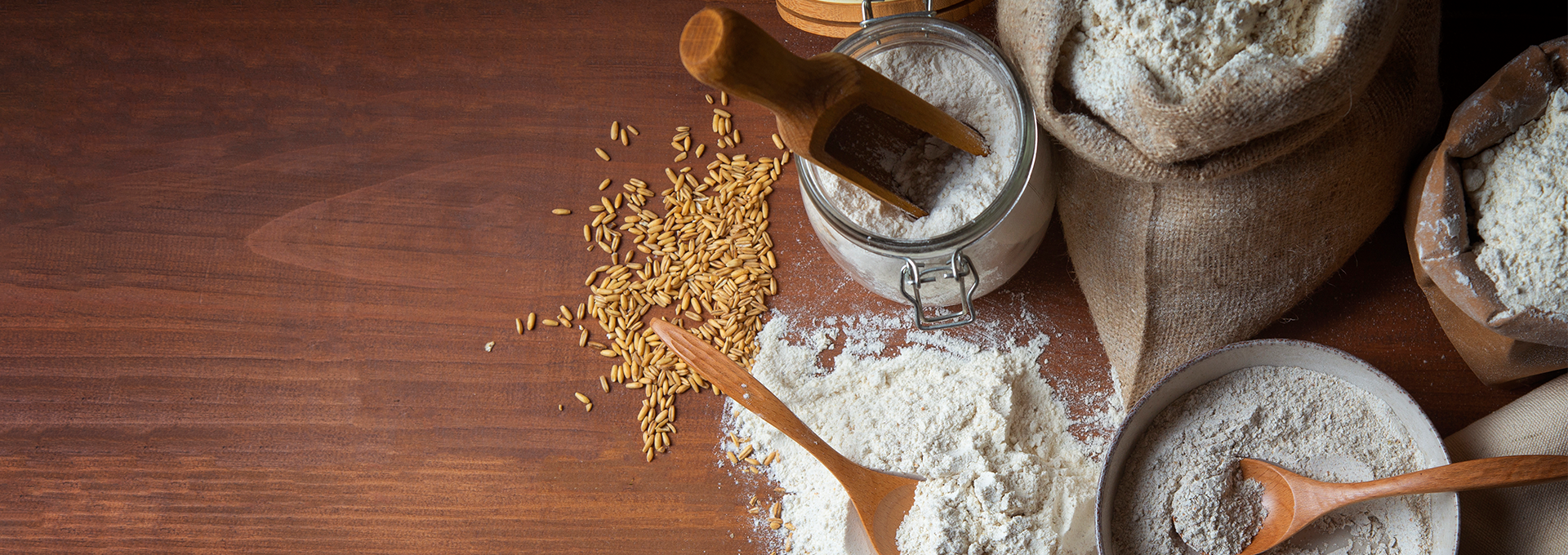
16 Types of Flours & When to Use Them
Exploring 16 Different types of flours: Your Go-To Guide
Ever wondered how a simple ingredient like flour can enhance your daily recipes? The world of flours is vaster than you think. From the lightest pastries to the heartiest bread, the right types of flours can make a difference in your recipes.
Think about the texture and flavour you can create with whole wheat flour in your bread, or how a hint of almond flour can add a delightful twist to your favourite cookies. Each flour has its unique flavour and can turn everyday dishes into chef’s specials.
The different types of flours available can dramatically change the outcome of your cooking and baking. Curious about how to use these flours in different recipes? Let’s delve into this guide and see how each type of flour can change your kitchen game.
Types of flours
With so many flours to choose from, knowing the characteristics of every type is crucial. From trustworthy all-purpose flour to more specific ones like rye flour or almond flour, today we will be looking into 16 types of flours, their production process and how to use them.
Whether you want to get the perfect flour for your bread recipes or try different flours for pastries and more, you’ll find it all here.
-
All-Purpose Flour
All-purpose flour is like that reliable friend you can always count on in the kitchen. There is a reason this refined wheat flour is called an “all-purpose flour”. It’s versatile and works well in many recipes.
Milled from both hard and soft wheat grains, all-purpose flour has a balanced texture — not too coarse, not too fine. You can find it in bleached or unbleached varieties. The bleaching process enhances baking qualities and the unbleached retains more of its natural character.
Recipes to use All-Purpose Flour:
- Cookies: For those classic chocolate chip cookies, all-purpose flour is the sweet spot with just the right balance of chewiness and structure. Referred to as Maida in India, this versatile flour gives the cookies slightly crispy edges and soft centres.
- Bread: If you’re making fluffy, golden bread, this is your go-to flour. It allows the dough to rise well, making our bread light and fluffy. It’s perfect for most recipes, from everyday sandwich loaves to artisanal breads.
- Pancakes: Want light and fluffy pancakes? All-purpose flour has got you covered. It holds moisture well, resulting in a tender crumb perfect for buttermilk pancakes or fruit-filled ones.
- Sauces: All-purpose flour also works as a thickening agent for sauces and gravies. Cooked with fat, it forms a smooth roux that blends into liquids beautifully, creating silky, lump-free sauces.
All-purpose flour is used all over India, from the soft chapatis and parathas of the north to the Kerala parotta of the south. It’s one of the must-have flour kinds in every kitchen for daily and special occasions.
-
Whole Wheat Flour
Whole wheat flour is a whole grain flour that includes the bran germ and endosperm of the wheat kernel, for a denser texture and rich flavour. It’s a great way to add some nutritional value to your baking with the extra fibre, vitamins and minerals it contains.
Ground from the whole wheat kernel, whole wheat flour retains all the natural goodness of the grain.
Recipes to Use Whole Wheat Flour:
- Whole Wheat Bread: For multigrain bread or traditional brown bread, whole wheat is the clear-cut choice. It gives a denser texture and nuttier flavour, perfect for sandwiches or toasting with butter. Bake soft, flavourful loaves with Chakki Fresh Atta to elevate the taste of basic sandwiches and toast.
- Chapatis and Parathas: A staple in Indian kitchens, whole wheat flour is used to make chapatis, parathas and other flatbreads. Its robust texture and earthy taste pair well with spicy curries and stir-fried vegetables.
- Cookies: Want to make cookies that are a bit more wholesome? Using this flour will give them a nice nuttiness and a firmer bite, adding depth to flavours like chocolate chip, oatmeal or even ginger spice.
- Churma – A North Indian dessert made by roasting Sharbati Atta dough, mixing it with ghee, sugar, and cardamom, then grinding it into a coarse, crumbly texture.
Whole wheat is among the healthiest types of wheat flour widely used in northern India for daily roti and paratha. It’s also gaining popularity in urban areas where there’s a move towards healthier eating. People are using this flour in everything from baking to thickening soups and stews.
-
Bread Flour
Bread flour is high in protein which gives it the strength to rise and hold its shape, ideal for bread recipes. It has a chewy texture and strong flavour for hearty breads and crusty loaves.
Milled from hard wheat varieties, bread flour contains a gluten content, which gives the elasticity needed for bread making.
Recipes to Use Bread Flour:
- Sourdough Bread: Bread flour is common in sourdough recipes, providing the right structure and texture. It is ideal for preparing a crusty, tangy loaf.
- Pizza Crust: Bread flour is a hero ingredient for a chewy, airy crust. Use this flour in your dough to get a pizzeria-style crust at home.
- Bagels: Get the perfect chewy bagel texture with bread flour which is ideal for dense doughs.
- Dinner Rolls: Make soft, fluffy dinner rolls with bread flour for a tender yet sturdy crumb that pairs well with savoury meals.
Bread flour is particularly popular in regions where hearty breads are widely consumed, such as Punjab.
Punjab being known as the bread basket of India with its vast farmlands, offers a rich variety of breads like Aloo Paratha, Makki di Roti, Naan, Tandoori Roti, Amritsari Kulcha, and Chole Bhature, all enjoyed with flavorful curries and dals.
-
Cake Flour
Cake flour is a fine-milled, low-protein flour that creates tender crumbs and a delicate texture, perfect for soft fluffy cakes. Its silky feel and fine grain help in creating light baked goods. It’s one of the most common types of flours used in bakeries.
Milled from soft wheat, cake flour is often bleached to give it a bright white colour and break the protein bonds, to make it finer and softer.
Recipes to Use Cake Flour
- Sponge Cake: Using Cake Flour makes the sponge cake tender and airy. This flour is perfect to get that soft melt-in-your-mouth texture that you only taste in bakeries!
- Cupcakes: Use cake flour for light moist cupcakes that hold their shape without being too dense.
- Pound Cake: Cake flour ensures that the pound cakes are soft and buttery, without being too heavy. Once baked, you’ll have a tender, uniform crumb in every slice.
- Cookies: For those who like softer, chewier cookies with a delicate texture, try replacing all-purpose flour with cake flour.
Cake flour is used in regions with strong baking culture, and urban areas where home baking is popular for celebrations and casual desserts.
-
Pastry Flour
Pastry flour falls between all-purpose and cake flour, fine texture with moderate protein. This flour is perfect for tender flaky pastries that are light and delicate, not too crumbly.
Pastry flour is milled from soft wheat, a finer grain that enhances the texture of baked goods.
Recipes to Use Pastry Flour:
- Pie Crust: For the flakiest pie crusts, types of flours like pastry flour are unbeatable. It makes the crust tender yet sturdy enough to hold fillings.
- Tarts: Pastry flour’s lower gluten content creates a light buttery tart shell when baked. It has the right balance for a crisp yet soft bite.
- Biscuits: Use pastry flour for soft fluffy biscuits with a light airy texture, perfect for breakfast or side dishes.
- Danishes: Pastry flour makes the perfect base for Danish pastries – a tender, flaky texture that goes well with sweet or savoury fillings.
Pastry flour is used in urban and suburban kitchens where it helps create traditional and modern bakes.
-
Self-Rising Flour
Self-rising flour is a combination of all-purpose flour with measured amounts of baking powder and salt. This flour is the choice of amateur bakers, offering easy-to-bake flour to help baked goods rise evenly and hold their shape.
Recipes to Use Self-Rising Flour:
- Biscuits: Self-rising flour is perfect for fluffy, buttery biscuits that rise every time. Self-rising flour makes it quick and easy to bake supermarket-like biscuits at home with no fancy ingredients needed.
- Quick Bread: Use self-rising flour for quick breads like banana or zucchini bread. It requires less prep time without sacrificing texture or taste.
- Pancakes: Get light, fluffy pancakes with self-rising flour, perfect for a quick breakfast solution. This flour adds the right lift without extra steps.
- Dumplings: Self-rising flour is good for making fluffy dumplings, perfect for soups and stews, light and satisfying bite.
Self-rising flour is used in regions where quick and easy baking solutions are in demand, for busy households.
-
00 Flour
00 flour, or “doppio zero” is an Italian flour with a super fine texture, perfect for pizza doughs and pasta. It’s used to create smooth, elastic doughs with light, airy crumbs and crisp bite.
Milled from soft wheat, 00 flour is graded on its fineness – 00 is the finest.
Recipes for 00 Flour:
- Pizza Dough: For Neapolitan pizza, 00 flour gives the perfect texture and chew. With this flour, you can easily achieve that thin, crispy crust with a slightly chewy centre.
- Pasta: Homemade pasta benefits from 00 flour, smooth, elastic dough that cooks evenly. 00 flour makes it easier to roll out pasta to the right thickness.
- Flatbreads: 00 flour is good for thin, crispy flatbreads, fine crumb and crunchy.
- Breadsticks: For soft yet crispy breadsticks, 00 flour gives the right balance, and delicate texture that pairs well with dips and spreads.
Used in Italian-inspired dishes across India, 00 flour is a favourite among pizza lovers and home cooks who make pasta from scratch.
-
Semolina Flour
Semolina flour or Suji, made from durum wheat, is coarser and more granular than other flours. It has a rich, yellow colour and high protein content, perfect for pasta, suji-vada and some breads.
Milled from durum wheat, semolina retains a slightly rough texture that gives it its special properties in baking and cooking.
Recipes to Use Semolina Flour:
- Fritters: Semolina fritters, the crispy, golden-brown Indian snacks made by frying semolina mixed with spices. Suji adds a delightful crunch on the outside while keeping the inside light and airy.
- Bread: Add semolina flour in bread recipes for a golden, slightly chewy crumb and robust texture.
- Desserts: Semolina is used in Indian sweets like halwa where the granular texture adds a nice bite.
- Pizza Crusts: Add semolina flour to pizza dough for extra crispiness and a nutty flavour that enhances the overall experience.
Popular in Mediterranean and Middle Eastern cuisines, semolina flour is a pasta lover’s staple and is also used in many Indian dishes. Indeed so versatile!
-
Rye Flour
Rye flour is a dark, hearty flour made from rye grain, known for its strong flavour and dense texture. It’s often used in combination with other flours to create flavoured bread and baked goods.
Rye flour is milled from the whole rye grain, including the bran, so it has a higher fibre content and darker colour. These types of flours retain the full nutritional profile of the rye, a rich, earthy flavour.
Recipes to Use Rye Flour:
- Rye Bread: Rye flour is used in bread recipes like pumpernickel and sourdough where its strong flavour and dense texture add the x-factor. It makes hearty, flavourful loaves with a nice chewy texture.
- Crackers: Rye flour adds a nutty, robust flavour to homemade crackers, perfect for pairing with cheese and spreads.
- Muffins: Add rye flour to muffin recipes for a denser, more filling breakfast option.
- Crispbread: Rye flour is popular in Scandinavian cuisine for crispbread, a thin, crunchy bread often topped with flavourful toppings.
Rye flour is gaining popularity in urban kitchens for its health benefits and unique taste, especially in baked goods and artisanal bread.
-
Almond Flour
Almond flour is a gluten-free alternative made from finely ground almonds. Perfect for low-carb diets or anyone looking to add a nutty flavour and extra protein to their baking.
After removing the skin from blanched almonds, ground them into a fine powder to produce almond flour. It has a light texture and a sweet mild flavour. These types of flours are packed with nutrients including vitamin E, magnesium and healthy fats.
Recipes to Use Almond Flour:
- Macarons: The delicate and airy texture of French macarons relies heavily on almond flour. Its fine consistency and slightly sweet flavour make it the perfect base for these beautiful cookies.
- Pancakes: For a low-carb breakfast almond flour pancakes are a light and fluffy alternative. Not only delicious but also packed with protein to keep you full longer.
- Gluten-Free Baking: From brownies to cakes almond flour is a popular choice in gluten-free baking. It provides a moist texture and a slightly nutty flavour that pairs well with chocolate, fruits and spices.
- Breading: Craving crispy chicken or fish? Use almond flour as a breading for a nutty gluten-free crust that’s perfect for frying or baking.
Almond flour is not commonly used in Indian cooking but is gaining popularity in urban regions, especially for gluten-free and keto recipes. It’s a favourite among health-conscious bakers looking to replace refined flours with something healthier.
-
Buckwheat Flour
Buckwheat flour is a gluten-free option with a rich earthy flavour for those who like to mix things up. Packed with nutrients it’s a go-to for those trying alternative flours. Milled from buckwheat seeds, these types of flours have a dark colour and slightly gritty texture.
Recipes to Use Buckwheat Flour:
- Crepes: Buckwheat flour is a classic for French galettes or savoury crepes. It gives them a nutty earthy flavour and makes them truly rustic.
- Noodles: Japanese soba noodles are originally made from buckwheat flour, giving it a firm texture and unique flavour.
- Bread: For a gluten-free twist try mixing buckwheat flour with other types of flours. It adds a depth of flavour and a hint of nuttiness.
- Muffins: Buckwheat flour makes your muffins dense and moist and pairs well with fruits like blueberries or bananas.
In India, buckwheat flour is used in health-focused recipes, especially in areas where gluten-free diets are popular.
-
Bengal Gram Flour
Also known as gram flour or besan, chickpea flour is a pantry staple in Indian kitchens. Made from ground chickpeas it has a nutty flavour and slightly grainy texture and is versatile for both savoury and sweet dishes.
Chickpea flour is made by grinding dried chickpeas into a fine powder. Commonly called Besan in India, this flour is processed meticulously, keeping all the natural flavour and nutritional benefits intact.
Recipes to Use Bengal Gram Flour:
- Chana Dal Gatte – A variation of the famous Gatte ki Sabzi, where spiced Bengal gram flour dough is boiled, cut into pieces, and cooked in a spicy yoghurt-based gravy.
- Khasta Kachori – A popular snack made with a flaky, crispy outer shell filled with a spiced mixture of Bengal gram (chana dal) or moong dal, along with various spices like cumin, coriander, fennel, and asafoetida.
- Litti Chokha- A Bihari delicacy featuring wheat flour balls stuffed with spiced sattu (roasted Bengal gram), roasted to perfection. It’s served with chokha, a mashed vegetable mix, offering a flavorful blend of nutty and smoky tastes.
- Chana Dal Usal – Maharashtrian dish made by cooking Bengal gram with aromatic spices like mustard seeds, cumin, and garlic, creating a flavorful, slightly tangy curry. It is often served with rice or pav, making it a hearty and comforting meal.
Bengal Gram Flour is a pantry staple in Indian homes used in many traditional gluten-free recipes.
-
Corn Flour
Corn flour is a fine powder made from whole corn kernels. Unlike cornmeal or cornstarch, it has a slightly sweet flavour and light fluffy texture and is perfect for baked goods and coatings.
By grinding whole corn kernels into a fine powder, corn flour keeps all the natural sweetness and nutrients of the corn so it’s a pantry staple.
Recipes to Use for Corn Flour:
- Cornbread: For light and fluffy cornbread with a hint of sweetness, use corn flour. Chakki Fresh Atta is a great substitute for corn flour, adding a natural flavour, denser texture, and sweetness to your bread.
- Batter: Use corn flour in batters for frying, for a light crispy coating on vegetables, chicken or seafood.
- Muffins: Corn flour gives a tender crumb and a hint of sweetness to muffins, perfect for breakfast or snacks.
- Pancakes: Add corn flour to your pancake batter for a fluffy slightly sweet version to go with savoury or sweet toppings.
In India, corn flour is used in many traditional and modern recipes like Soup, Schezwan Pakodas, Kheer (as a thickening agent), puddings, tempura and tortillas. It is also widely used in the Western and Northern parts of the country for recipes like Dhokla, Khandvi, Thepla, Koftas & Gulgule.
-
Oat Flour
Made from finely ground oats, oat flour has a mild flavour and a light texture. It’s a nutritious option, high in fibre and protein and works well in many baked goods, especially gluten-free recipes.
Oats are ground into fine flour, retaining their natural nutrients and light texture. It is processed in a way that the flour retains the wholesome goodness of oats, so it’s a healthy addition to your kitchen.
Recipes to Use Oat Flour:
- Cookies: Oat flour gives cookies a soft chewy texture and a mild wholesome flavour.
- Pancakes: For a healthy version of a breakfast favourite, oat flour pancakes are light, fluffy and full of fibre.
- Breads: Add oat flour to your bread recipes for extra softness and fibre.
- Smoothies: Add oat flour to your smoothies for creamy texture and nutrition.
In India, oat flour is a favourite among health enthusiasts, used in gluten-free and high-fibre recipes.
-
Rice Flour
Rice flour is a gluten-free option made from finely milled rice. It’s known for its light texture and subtle flavour making it a versatile ingredient in both sweet and savoury dishes.
Rice flour is made by grinding raw rice into a fine powder. It’s used in Asian cuisine to create light crispy textures in frying batters and to thicken soups or sauces without adding a heavy taste.
Recipes to Use Rice Flour:
-
- Modak: Ukdiche Modak is a popular delicacy from Maharashtra, made with a sweet coconut filling wrapped in a soft, steamed dough made from rice flour.
- Batter for Frying: Rice flour can be used as a substitute to besan while creating batter for frying, creating a super crispy light coating for vegetables, shrimp and more.
- Mochi: This chewy Japanese dessert gets its texture from rice flour which gives it that bouncy and pliable texture.
- Evening Snacks: Delights like Papad, Chakli, and Mathri are often prepared using rice flour, which gives them a crispy texture, and they are shaped, seasoned, and deep-fried until golden brown.
- Roti: Rice flour roti dishes, a popular choice among various flour varieties, are known for their crispier edges, making them ideal for Indian snacks. Popular in southern India for dosa, idli, and sweets, it’s also used in Akki Roti (Karnataka) and Bhakri (Maharashtra) and is favoured in health-conscious kitchens across India for its light texture and versatility.
-
Tapioca Flour
Also known as tapioca starch, tapioca flour is derived from the cassava root. Cassava root is ground into a fine powder, resulting in tapioca flour. It’s a starchy gluten-free flour that adds chewiness and crispiness to baked goods, so it’s a key ingredient in gluten-free and allergy-friendly recipes.
Recipes to Use Tapioca Flour:
-
- Gluten-Free Bread: Tapioca flour gives gluten-free bread a chewy texture, and improves its structure and moisture. It helps achieve similar airy crumbs as found in bread made with Maida.
- Thickening Agent: Tapioca flour is perfect for thickening sauces, soups and pie fillings, and gives a smooth glossy finish without changing the flavour.
- Vrat Recipies: Explore a variety of delicious Vrat recipes made with tapioca flour, including Sabudana Vada, Sabudana Khichdi, Sabudana Momos, Vrat Chillas, Vrat Pakodas, and much more, perfect for fasting days.
- Crispy Coatings: Use tapioca flour to get a crispy coating on fried foods, without changing the taste.
- Baked Goods: Tapioca flour is great for adding chewiness to gluten-free cookies and cakes, so every bite is satisfying.
- Boba Tea: Boba tea is made by adding chewy tapioca pearls, which are prepared using tapioca flour, creating a unique texture that complements the sweet, flavorful tea.
Tapioca flour is also widely used to prepare Sabudana which is consumed across India when people observe fasts.
Conclusion
Flour can make or break your dishes, whether you’re cooking or baking. From the versatile All-Purpose Flour to the Almond Flour, each flour has its own benefits and is meant for specific recipes.
Whether you’re making traditional Indian dishes or trying out new recipes, Fortune has premium quality flours that can be your kitchen’s and family’s favourite.
Ready to level up your cooking? Visit us for more information on our products and recipes.
FAQs
-
What are the different types of flours and their uses?
There are many types of flours, each for different baking needs. All-purpose, whole wheat, bread, cake and pastry flour are common. Each has its own texture and gluten content, making them suitable for bread, cakes or pastries.
-
How is whole wheat flour different from all-purpose flour?
Whole wheat flour is made from the entire wheat kernel and has a denser texture and richer flavour than all-purpose flour which is more refined. It adds more nutrients and a nutty taste.
-
What flour is best for baking bread?
Bread flour is the best for bread. It has high gluten content which helps the bread rise and develop a chewy texture. If you’re looking for a gluten-free option you can mix different types of flours like buckwheat or chickpea flour.
-
Can I use all-purpose flour instead of cake flour in recipes?
Yes, you can use all-purpose flour instead of cake flour but the texture will differ. To replicate cake flour you can mix all-purpose flour with cornstarch.
-
What are the common types of flours used in bakery recipes?
Common types of flours used in bakery recipes are all-purpose flour, cake flour, bread flour and pastry flour. Each type of flour gives different textures and flavours to baked goods, from soft cakes to chewy breads.
